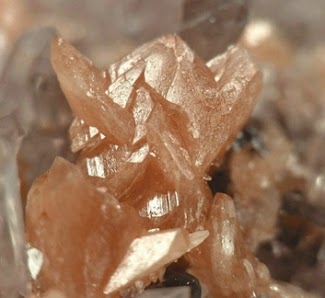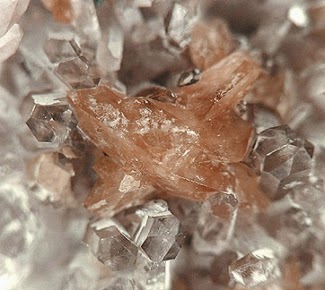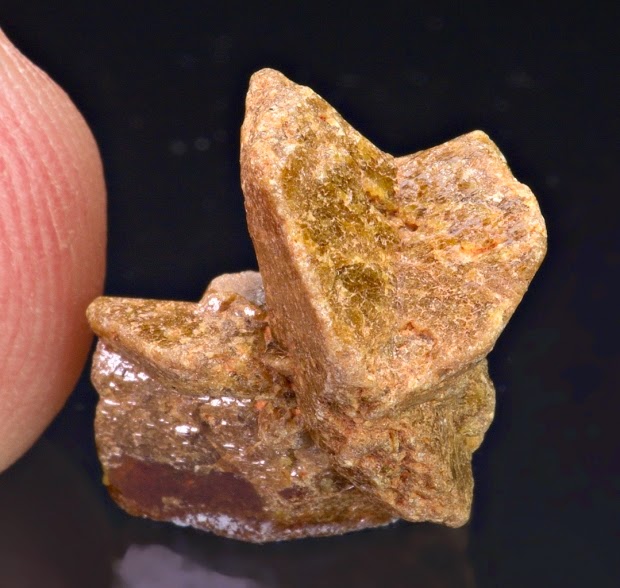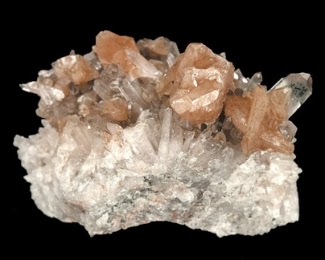
Chemical Formula: (Ce,La,Nd,Th)(PO4)
Locality: Mars Hill, Madison County, North Carolina.
Name Origin: From the Greek monazeis – “to be alone” in allusion to its isolated crystals and their rarity when first found.
Monazite is a reddish-brown phosphate mineral containing rare earth metals. It occurs usually in small isolated crystals. There are at least four different kinds of monazite, depending on relative elemental composition of the mineral:
- monazite-Ce (Ce, La, Pr, Nd, Th, Y)PO4
- monazite-La (La, Ce, Nd, Pr)PO4
- monazite-Nd (Nd, La, Ce, Pr)PO4
- monazite-Sm (Sm, Gd, Ce, Th)PO4
The elements in parentheses are listed in the order in which they are in relative proportion within the mineral: lanthanum is the most common rare earth in monazite-La, and so forth. Silica, SiO2, will be present in trace amounts, as well as small amounts of uranium and thorium. Due to the alpha decay of thorium and uranium, monazite contains a significant amount of helium, which can be extracted by heating.
Monazite is an important ore for thorium, lanthanum, and cerium. It is often found in placer deposits. India, Madagascar, and South Africa have large deposits of monazite sands. The deposits in India are particularly rich in monazite. It has a hardness of 5.0 to 5.5 and is relatively dense, about 4.6 to 5.7 g/cm3.
Optical properties
Optical and misc. Properties: Translucent
Refractive Index: from 1,78 to 1,84
Axial angle 2V : ~12°
Physical Properties
Cleavage: {001} Distinct, {100} Indistinct
Color: Brown, Colorless, Greenish, Gray white, Yellow.
Density: 4.8 – 5.5, Average = 5.15
Diaphaneity: Subtransparent to subtranslucent
Fracture: Conchoidal – Fractures developed in brittle materials characterized by smoothly curving surfaces, (e.g. quartz).
Hardness: 5-5.5 – Apatite-Knife Blade
Luminescence: Non-fluorescent.
Luster: Adamantine – Resinous
Streak: grayish white
Photos :













